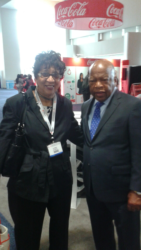On Monday the nation will pause to observe the annual holiday honoring the life and legacy of iconic civil rights leader, Dr. Martin Luther King, Jr. Yet too many Millennials and members of their younger cohort, Generation Z, consider civil rights history as ancient history at the dawn of a new millennium.
However, there are profound and poignant lessons which today’s young people need to learn. The most important lesson is how to make major changes in society through the type of peaceful means championed by the Rev. Dr. Martin Luther King Jr. and his fellow civil rights leaders of the time.
A term of significance for young people to comprehend is: “civil disobedience.” Continue reading MLK Day: Civil Rights Lessons for Millennials and Gen Z – by David Grinberg

 Juneteenth, or Freedom Day, commemorates the end of slavery in the United States following the surrender of General Robert E. Lee in 1865. Since that day, each year Black communities have commemorated that fateful day by uniting in celebration. Over the last year, however, following the murders of George Floyd and many others, Juneteenth has taken on a new meaning.
Juneteenth, or Freedom Day, commemorates the end of slavery in the United States following the surrender of General Robert E. Lee in 1865. Since that day, each year Black communities have commemorated that fateful day by uniting in celebration. Over the last year, however, following the murders of George Floyd and many others, Juneteenth has taken on a new meaning.